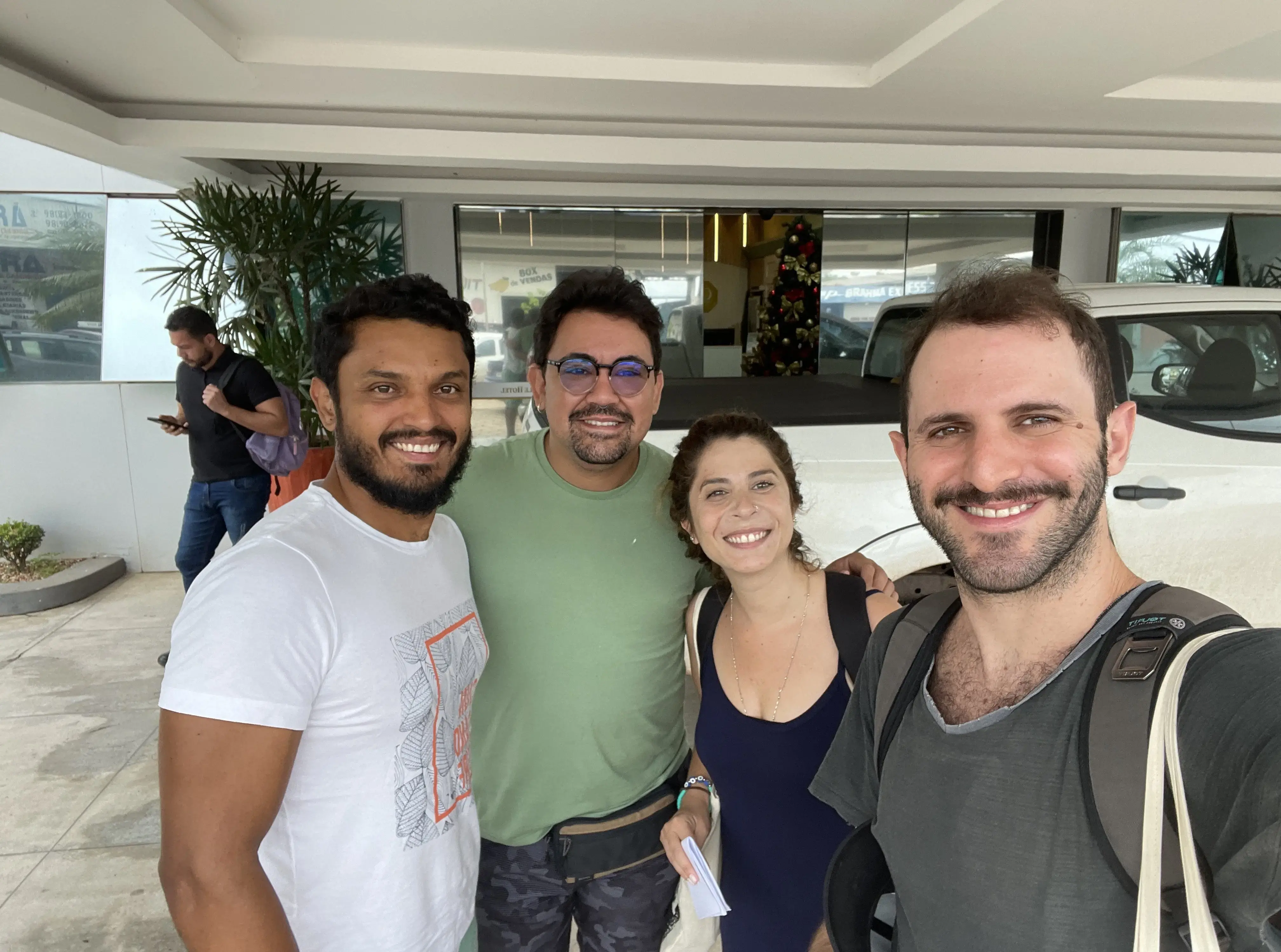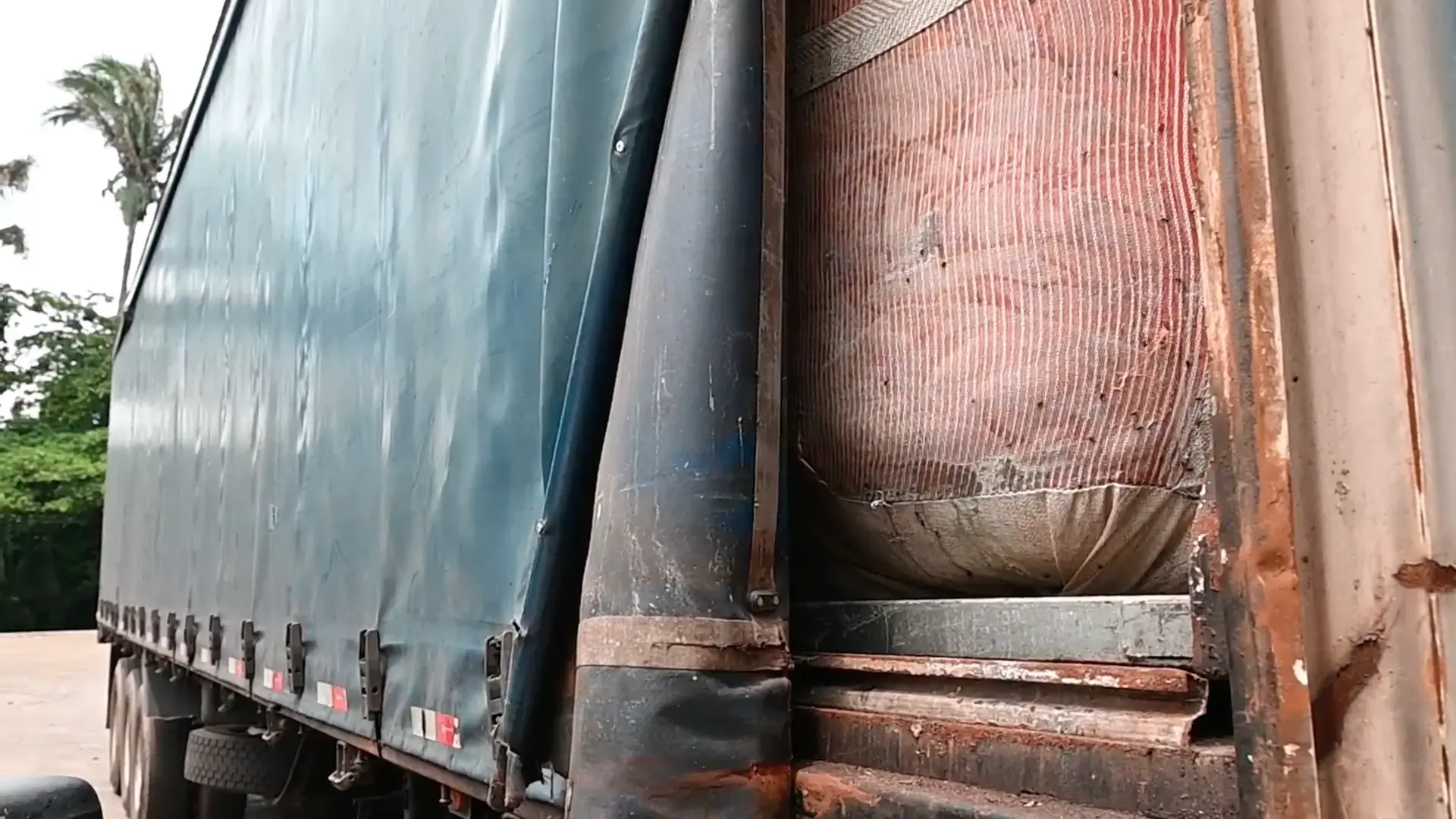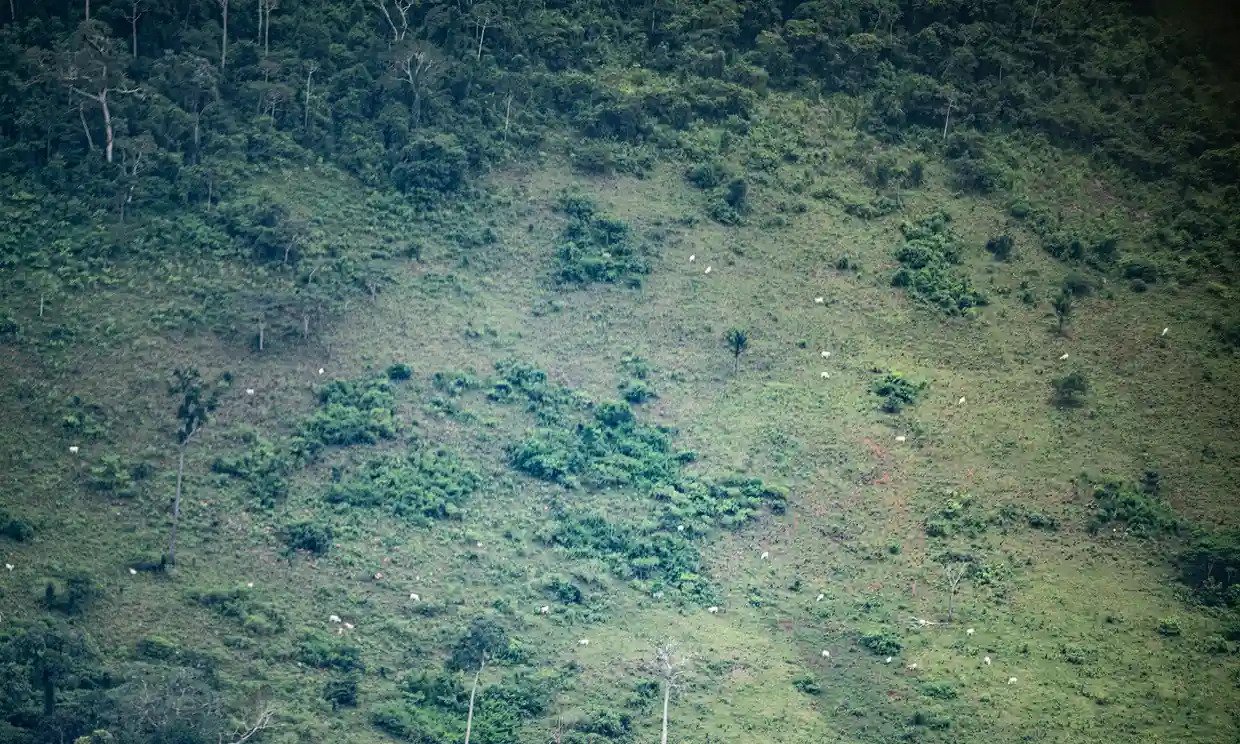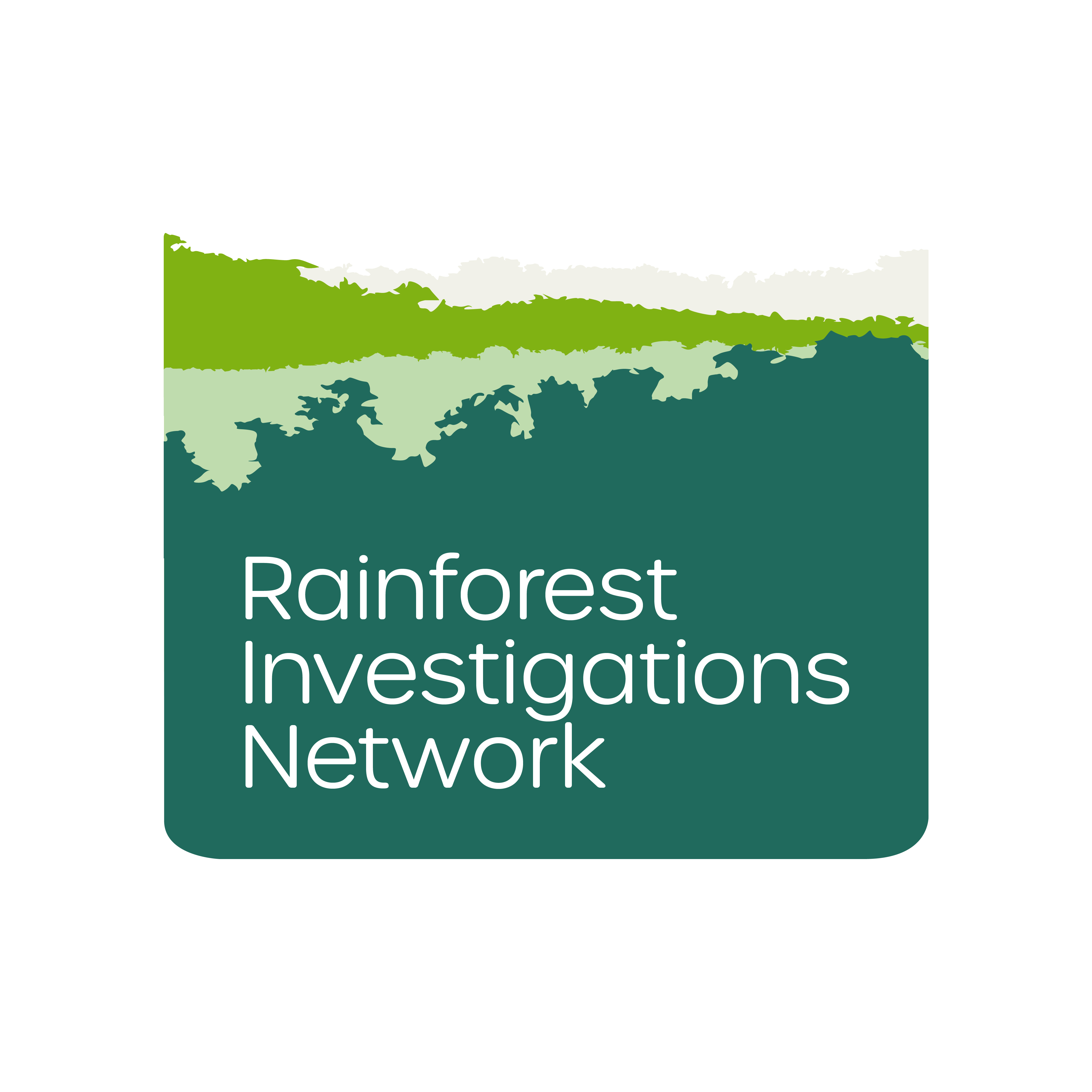When I started my investigative project with the Rainforest Investigations Network, I already knew that I wanted to reveal how food commodities are affecting the health of the Amazon rainforest and the lives of the Indigenous people who live there.
However, I was surprised to discover, in the course of analyzing data and checking documents, that one of the products of meat production—collagen—is also closely connected to the destruction of the Amazon and the Invasion of Indigenous territories.
This cross-border and collaborative investigation uncovered, for the first time, the links between the collagen industry and environmental crimes and human rights abuses in Brazil. Considered by many a “byproduct” of the beef trade, collagen is obtained from bovine hides extracted after a cow is slaughtered. This food supplement, hailed as a miraculous anti-aging cure, is produced by companies, such as the Swiss giant Nestlé, that are not currently obliged to monitor their supply chains. The complete lack of scrutiny and transparency contrasts with the relevance of this booming segment, endorsed by celebrities and worth at least $4 billion globally.
For seven months, a team of journalists in the United Kingdom and in Brazil teamed up to dive deeply into how collagen is produced, analyse data, go through public and private records, export documents, uncover corporate documents, and conduct multiple interviews with experts and people close to the collagen and gelatin supply chain. The combination of desk reporting, data analysis, and three reporting trips to four Brazilian states was key to gather indisputable evidence and confirm the links between companies on this multi-layered supply chain.
Reconstructing the steps of a cow from a farm in the Brazilian Amazon to a bottle of collagen in the shelves of big retailers in Europe, the U.K., or the U.S. was a mammoth challenge. But working collaboratively, exchanging ideas and complimentary skills, helped us go further and deeper into a completely new territory for journalists.

Hypothesis
After we educated ourselves about how bovine collagen is produced, we understood that the claims of a “sustainably sourced product” could not be true if the bovine hides were sourced from massively controversial meatpackers, such as JBS, Marfrig, and Minerva in Brazil. Many of my colleagues at Rainforest Investigations Network and other outlets have shown over the years the failures of these companies to meet their sustainability commitments. For example, before diving into the collagen case, our team had already shown how Marfrig suppliers were threatening the way of life of the Indigenous Mỹky people in the state of Mato Grosso in the Brazilian Amazon.
Nestlé claims that its collagen brand Vital Proteins, advertised by megastar Jennifer Aniston, is produced with “grass-fed cows.” It wouldn’t give consumers a lot of reassurance if they knew that where there’s grass now was once a lush rainforest or maybe home to Indigenous people, often violently displaced from their ancestral territories.
Data sources
Here's a complete list of datasets and sources we have used in our investigation:
- Gray data: company financial records, sustainability and investors relations reports, presentations at trade conferences
- Google: press releases, news stories, market commentary
- SEC: information for publicly-listed companies, such as Darling Ingredients
- Panjiva, Import Genius: export records
- YouTube: often a good source for corporate PR films
- Sayari, OpenCorporates, Aleph, Cruza Grafos: company information
- JusBrasil: court cases against companies and individuals
- SIGEF, CAR: property records in Brazil
- Prodes: deforestation data
- MapBiomas: recent deforestation and fire alerts
- Google Earth: satellite imagery
- Ibama: embargoes and fines
- FUNAI: Indigenous territories shapefile
- MTE: modern slavery list in Brazil
- Slaughterhouses locations
- MAPA: slaughterhouse information, plants licensed to export
- Leaked lists of meatpacker suppliers and cattle transport permits (GTAs)
- CIMI, CPT: reports for land conflict
- Social media: Twitter, Facebook to find contacts and details on specific farm owners as well information on official company profiles
- Interviews on and off the record with multiple sources
- (Would a good nose to identify the trucks loaded with rotting bovine hides count as a data source?)
Methodology
As usually happens with complex investigations, it all started with a “what is that?” moment, followed by a head scratch. As our team investigated Nestlé’s involvement in the beef trade, my TBIJ colleague Andrew Wasley noticed an “anomaly” in the export records. “Hmm, what are all these ‘hydrolized collagen’ popping up?” we asked ourselves. All of a sudden, we were using Panjiva platform to pull out all recent shipment records of bovine collagen being shipped out of Brazil to the rest of the world and, as expected, Nestlé was one of the main buyers and Rousselot and Gelnex were two of the main sellers.
The relationship between these companies was established using corporate data platforms, such as OCCRP’s Aleph, Sayari Graph, SEC files, Brazilian public records, such as the corporate registry to map companies' subsidiaries and operations inside and outside of Brazil. Also, we used a journalist’s best friend: Google, which quickly showed us that Rousselot and Gelnex had more in common than we thought: the same parent company, the powerful Texas-based Darling Ingredients. Publicly available company financial and sustainability reports, investors meetings, media articles, and insider information provided us with enough material to jump to the next phase of understanding who supplies these collagen factories.
We had our suspicions, but at this point, we got stuck with the limitations of the desk reporting. So, it was time to send a team of reporters for a field trip to one of the collagen factories in Amparo, a small industrial town in São Paulo state. Interviews with residents, truck drivers, and experts revealed some of the missing pieces of this puzzle and names of companies involved, including the tanneries where the skins are processed and the slaughterhouses supplying the tanneries. But it was the very strong and putrid smell of rotting cow skins that confirmed we were on the right track. We repeated the format on another reporting trip a couple of months later to confirm the slaughterhouses' origins pointed out in the first round.

With the knowledge of some of the slaughterhouses involved, we used the Bureau’s expertise and experience tracking meat supply chains to find the cattle ranches that supply them in both Cerrado and Pantanal biomes. For that, we combined data scrapping of one of the company’s transparency websites with leaked data on some of their suppliers and cross-referenced this information with property records, Indigenous lands territories, and deforestation data in Brazil.
That was only the tip of the iceberg. As we wanted to show the issue was systemic, we expanded the research to another sourcing area, serving collagen producer Gelnex, in the Amazon. We understood we would need reinforcements. This was when we partnered with the Center for Climate and Crime Analysis (CCCA), who provided us a thorough analysis of the deforestation and invasion of protected areas and Indigenous territories linked to the thousands of cattle ranches selling cattle to three slaughterhouses that we could confirm were linked to the collagen production.
Now with the information in hand that more than 2,500 km2 of recent deforestation and the invasion of multiple Indigenous territories was confirmed, it was time to go on the ground again. Our team traveled to three Brazilian states, São Paulo, Tocantins, and Pará, to visit a collagen factory, tanneries, slaughterhouses, farms, and an Indigenous land under massive pressure by the expansion of the cattle industry. We interviewed residents, experts, truck drivers, and employees of these companies as the stench of rotting cow skins and flies took over the air close to these facilities. We came back home with bullet proof findings and a bit of a shock that a fancy industry that claims to produce a supplement good for your health is destroying the health of the planet.
Limitations of the methodology, lessons learned, challenges, and how we overcame them
Despite all the data sources available to TBIJ and its partners, some industries and sectors (including collagen) are simply under the radar in many respects, due to a lack of wider awareness or associated scrutiny. In such cases, there’s no substitution for the more old fashioned journalistic practices; identification and cultivation of sources (industry insiders, etc). Although some contacts were cultivated at the U.S. end of the investigation, time and logistical constraints meant that such approaches were limited in Brazil, EU, and elsewhere.
How this methodology can be replicated for other investigation purposes
The broad methodology used in this investigation is similar to that adopted by TBIJ over a series of other related stories in recent years, focused on beef and soy commodities. The approaches used offer potential for a wider look at the collagen sector and for further investigations into leather, as well as other commodities like palm oil.







